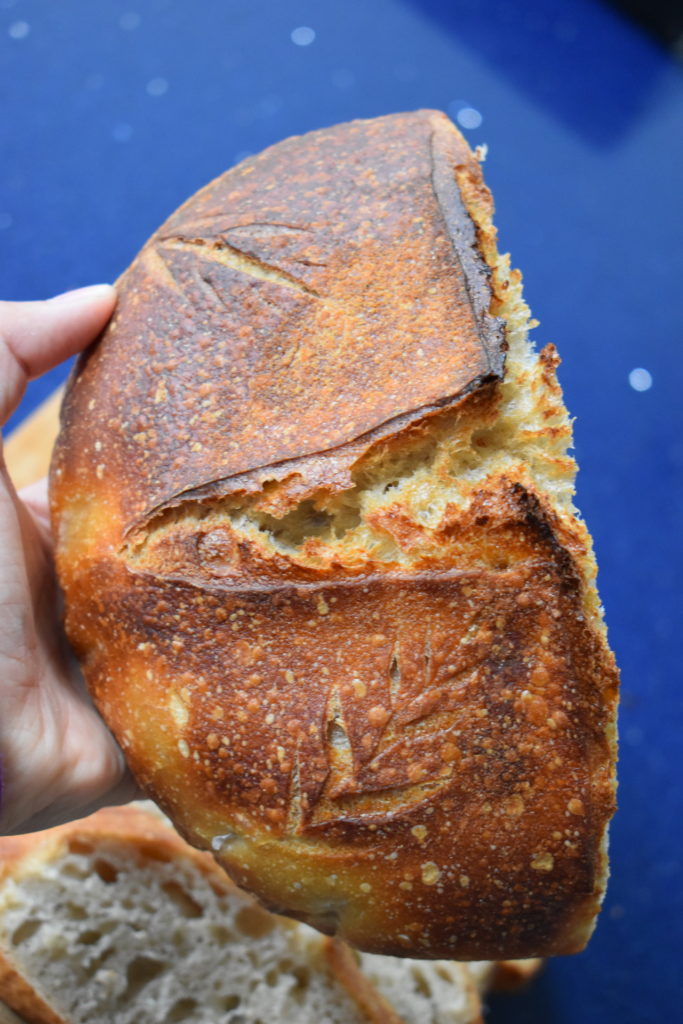A Labour of Loaf
The KB.eats Sour- Dough’s & Don’ts*
*more like the The Mistakes I Made So You Don’t Have To

First thing is first, this shouldn’t be considered a “how to guide”. This is supplementary information based on what I have learnt through making many mistakes and producing many subpar loaves of bread. I do not go into detail of processes or provide a recipe as I am not your baker for that. James Morton is. Am I teetering on the line of crazy fan girl by mentioning him yet again (been mentioning him a lot on instagram)? Potentially. But seriously, his book, “Super Sourdough”, has been my travel guide, my road map, my Lonely Planet, on this Sourdough journey. Yes we are capitalising the “s” for Sourdough as it deserves that respect. Super Sourdough can be purchased from all good online book shops. Not gonna provide an Amazon link. Support your local book shop if you can 🙃
When things go wrong, as they often will with Sourdough baking, I always refer to THE book. I have googled stuff and made notes on what I have read, particularly the more scientific information, but always go back to THE book. Even if you choose to use another book, I find it is more helpful to stick to one or two sources of information as there is so much out there, it can become quite confusing! Everyone has a technique that works for them and through a process of trial and error, you will figure yours out :).
I began my learning about Sourdough in the middle of winter and if you follow me on instagram, you will have seen it wasn’t a arduous journey haha it was stressful and frustrating but when I finally started seeing the desired results, it was so satisfying! The price of a loaf makes so much sense after you have a go at making one yourself.

Be Guided by Your Dough
Whilst the safety of following a recipe is something you will want to rely on, you gotta see how your dough is behaving. If your dough isn’t ready after 4hrs of bulk proving, you can’t move on as tempting as it’ll be. There are so many factors that influence how the dough acts, time shouldn’t be the only thing to dictate your process.
Is it a Floater?
Always test to see if your starter is ready to go by doing the float test before you use it. Drop a spoonful in lukewarm water, if it floats it’s ready. If not, wait some more. You know it’s ready when it floats because it means lots of co2 has is being produced and it is “active”.
Pay Attention to Temperature
Even in the winter, with the central heating on, the average temp in my house was not warm enough to encourage fermentation (you want it to be about 25-27c) so I had to give my starter more time to feed and get going, and allow the dough to bulk proof for longer. Getting a thermometer to measure room temp was helpful. If you know its colder outside take measures to account for it, like using warmer water and making sure your flour isn’t kept in a cold place before use.

Pr0vinG hAcK
I don’t have a airing cupboard so I tried making my own “proving draw” with a hot water bottle in a cool bag which worked a treat!
Make Notes
Write down what you did when making each loaf, this will help to determine where you went wrong and what worked. It’s like you’re recording the conditions of an experiment! While you’re at it, you could even write notes on what you read/learn. It’ll be helpful when you come across a problem that needs resolving.
On a Knead to Know Basis
Like everything else, the timings suggested for kneading, are just that, suggestions. If you have zero upper body strength like me, it may take longer to knead you dough. What you’re looking for is a smooth, less sticky (it will still be a bit sticky) dough. Do the window pane test to see if it’s ready https://www.thekitchn.com/bakers-techniques-how-to-do-th-70784.
But Has it Been Proofing for Long Enough?
This is something I still find hard to tell. What the hell am I even looking for?
I look for; bubbles = signs of activity, the dough to have become slightly “smoother” on top, it comes away from the bowl when you tip it without needing coercing, there is 50% growth in size and it should have a nice jiggle to it when you move the bowl.

PATIENCE IS KEY.
Don’t try rush the process. Treat your starter and dough like a temperamental toddler who needs love and affection, and tonnes of patience lol. Trying to take shortcuts to expedite the process may work but think of Sourdough as a slow food. Some days my starter takes 16hrs to get going so that means I can’t follow the schedule I planned! This is where awareness of temp comes in again, be prepared to have to be extra patient and wait longer for your loaf, if you don’t take make allowances for the colder temp.
Get Kitted Out
You, by no means, have to get the most expensive cast iron pot out there but I do suggest you get the equipment suggested. Yes you do need a dutch oven to make a good loaf, scoring is easier with a blade rather than a knife etc etc
It’s a Marathon Not a Sprint
Dough not be too hard on yourself if you do not produce the loaf you want on your first, second and even third attempt. It’s not easy. It’s taken me about 10+ loaves to finally produce one I am completely happy with! In fact I am still learning with every loaf. And if someone tells you it is easy, they ent doing it right 🙃 Have fun with it and learn from your mistakes. Also, who cares if it’s not perfect. What does “perfect” even mean. If you’re happy with less holes, great! Go with it. At the end of the day you just want something that is covered in butter and on it’s way to your mouth ASAP.
Let me know if you have any questions about Sourdough or any other baking things! Shout out to Diddles for coming up with the blog post title 🤙🏾
Stay at home and bake bread, love you 😘


